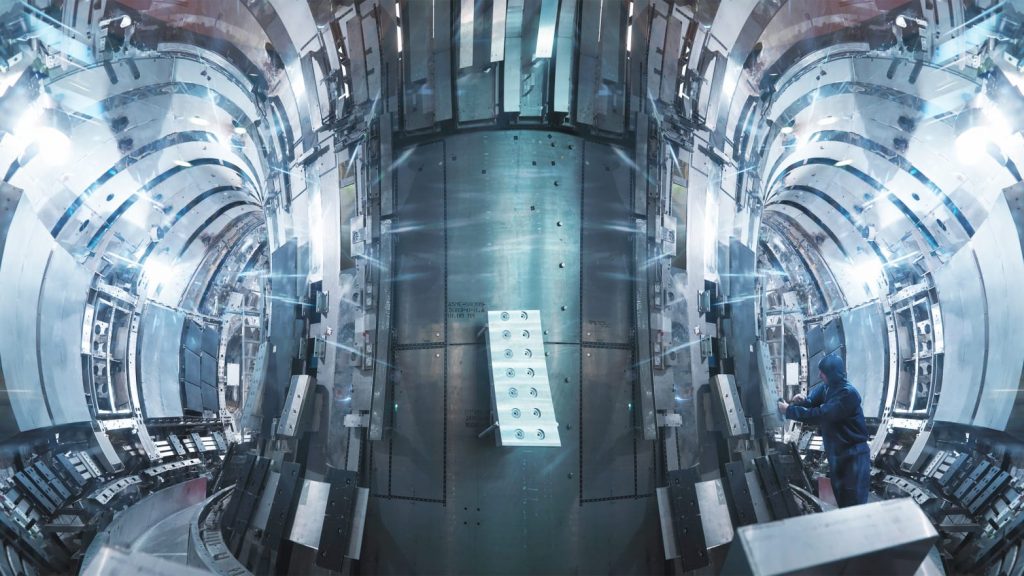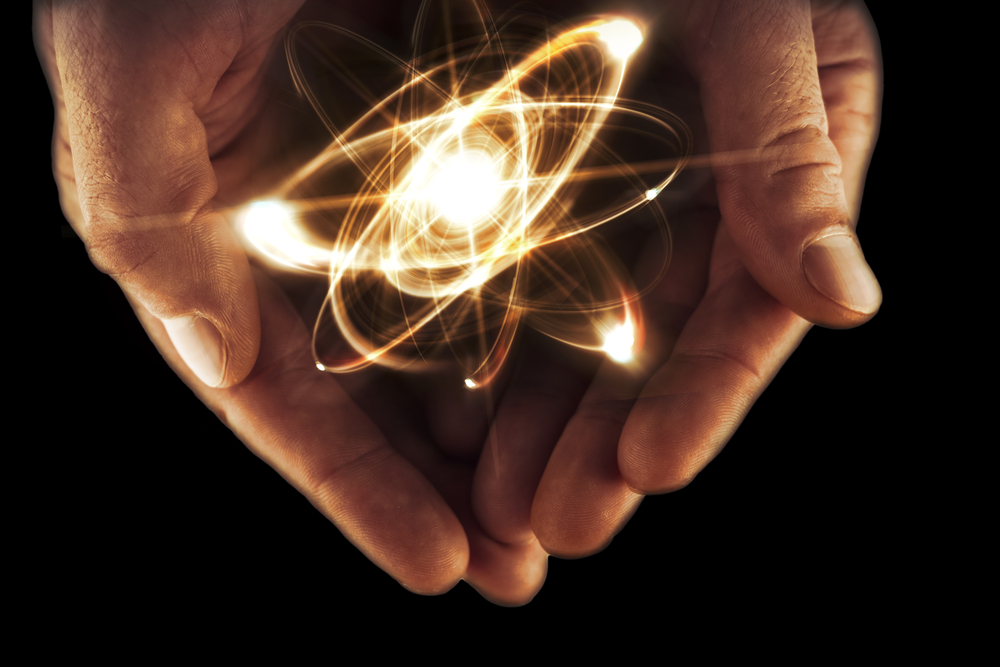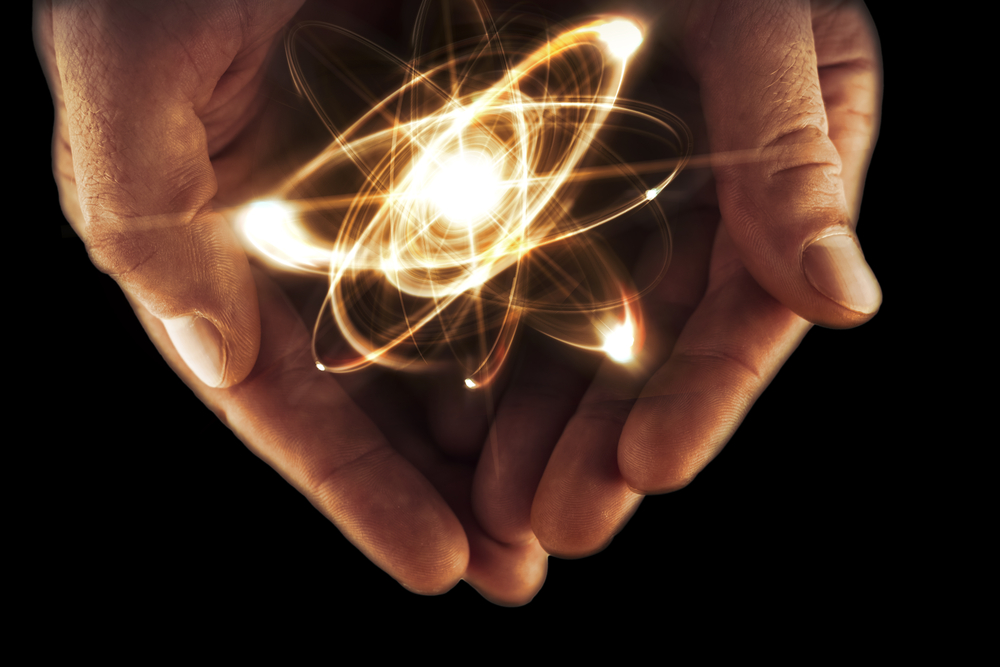
Technology nuggets and resources to drive your innovation
Boost your innovation with fusion tech
3D-printing for tungsten structures to hold liquid metal

Considering the evolution of high thermal stresses at the plasma facing surface (PFS) in fusion technology, a novel design for liquid metal divertor targets were developed of tungsten using 3D-printing. By introducing designed voids in the tungsten structure, they can serve simultaneously as both reservoir for the liquid metals (LM), and as wicking channel up to the PFS. The structure holds a liquid lithium alloy that protects the plasma-facing components through conduction of heat and vapor shielding.
SMART Materials for high-temperature application in energy systems
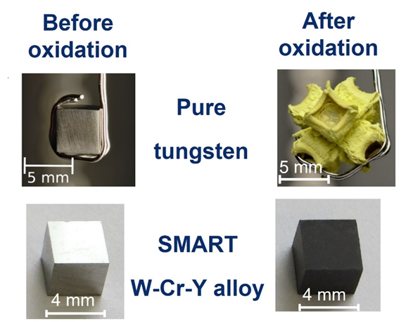
Self-passivating Metal Alloys with Reduced Thermo-oxidation (SMART) are under development for a fusion power plant. SMART Materials can adjust their properties depending on conditions: acting as a sputter-resistant plasma-facing material during plasma operation and suppressing the sublimation of radioactive tungsten oxide during an accident at temperature of up to 1000°C. Qualification of SMART materials under operational and accident conditions is completed. SMART can be prospective materials toward non-fusion applications under an extreme environment for future renewable energy sources: concentrated solar power receivers and high-temperature infrastructure components, such as modern heat-exchangers.
Porous silicon carbide with tailored thermal and electrical properties
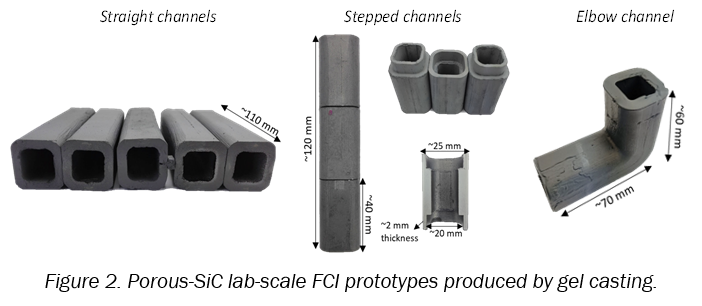
CEIT, a research center located in San Sebastian (Spain) has developed a method for producing porous SiC with tailored porosity and thus, controlled thermal and electrical properties. It was developed for fusion application as Flow Channel Inserts in high temperature Dual-Coolant Lead-Lithium (DCLL) blankets, where it served as electrical and thermal insulator. Hollow channels of complex geometries were produced and tested under a PbLi flow at 700°C. Based on gelcasting route, this know-how offers a low cost technique which is industrially scalable and allows consolidating complex shapes with high green strength. It avoids the end-capping defects that usually appear in ceramics samples produced by uniaxial pressing. This material could find application in other fields outside fusion such as filters for molten metal or high-temperature gas, volumetric absorbers of solar radiation, separation membranes, high temperature structural materials, among others.
Tungsten fibre-reinforced tungsten composites – touhening of inherently brittle tungsten for high temperature application
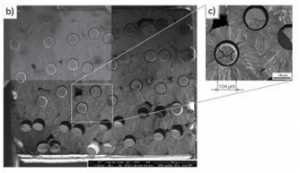
Materials with high performance regarding thermal properties as well as mechanical properties are required for application in high heat-flux environments, especially in new technologies for advanced energy production such as plasma facing materials in fusion reactors. With the incorporation of high strength and ductile W wire in a W matrix, new tungsten composites can show significantly increased mechanical properties and develop so-called pseudo-ductile behaviour. This new technology could also find promising applications in areas such as high temperature x-ray cathodes, concentrated solar power or casting molds.
Actively cooled heat sink based on tungsten
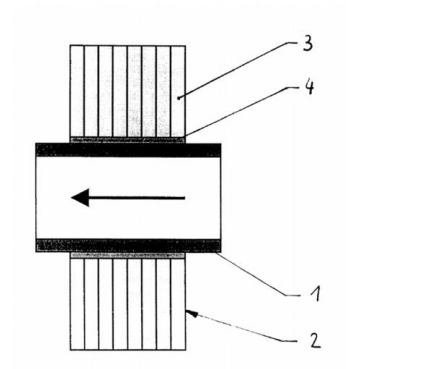
The invention consists in a composite part, such as a divertor plate for the “first wall” of a fusion reactor, adapted to endure a high thermal load, which is made, at least in some sections, of tungsten or a tungsten alloy. In accordance with the invention, the sections are not constructed massively from tungsten or a tungsten alloy, but rather are made as a laminated packet (multi-layeredness packages), with other enhanced alloys as copper, lanthanum alloy etc, in order to improve the susceptibility to fissures. This invention, heat shield is produced either as a massive block-shaped heat sink or as an actively cooled heat sink. This technology can find other suitable in other harsh environment such as Nuclear, Furnaces, Heat treatments and Materials. It can be also applied for high performances cooling systems in big science applications.
Spring-Energized Metal Seal
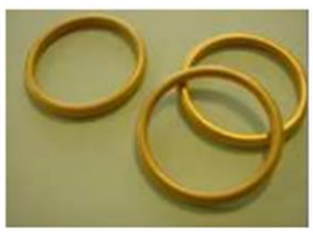
High tech metals seals are used when the application conditions are outside the specification limits of a polymer (when the temperature is too cold or too hot, vacuumed). The seals developed here consist out an spring optional liner, and jacket and made out a soft material (aluminium, silver, copper or nickel). Manufactured by harder plating (a spring energised seal ), these seals are very highly resilient to corrosive chemicals and intense levels of radiation and are especially relevant where seal longevity is needed. The spring seal is especially designed for the nuclear industry for the main reactor pressure vessel (collaborations with UKAEA on JET, SCK CEN) and can find other applications such as oils & gas, space, and valves and for life science
Oscillatory vapor shielding of liquid metal walls
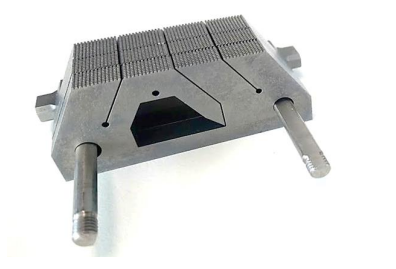
Member of the EUROfusion consortium, DIFFER discovered that a protective vapor shield above the liquid metal self-regulates the surface temperature to 800-900°C. Self-repairing and self-protecting liquid walls are an attractive concept for future fusion power plants, where the reactor walls need to withstand extreme temperatures and particle impacts. This layer can repair itself by flowing in new liquid after being damaged and evaporated liquid forms a vapor shield in front of the divertor which can diffuse power to other parts of the reactor before it reaches the divertor. Outside fusion, oscillatory vapor shielding of liquid metal walls finds a lot of promising applications where temperature-regulation and self-healing of the surface are met. Either directions where the energy efficiency of the process can be increased (induction furnaces, electric conversions,) or energy should be recovered (cogeneration, pressure recovery turbines, H2 recovery…)
Remote in-bore laser cutting & welding tools for pipeworks
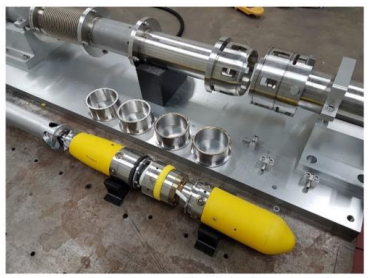
The maintenance, replacement and decommissioning of future nuclear fusion reactors will require quick and reliable cutting and joining of in-vessel pipework. It is estimated that cutting and welding could account for up to 60% of the maintenance duration using conventional in-situ processing techniques. Additionally, the expected radioactivity and limited access at the cutting and welding sites mean these processes cannot be done manually and robotic tools are required. To this end, remote in-bore laser cutting and welding tools have been developed for use in 90 mm internal diameter steel pipes. The technology is readily transferable to many remote applications in challenging environments such as fission reactor maintenance, nuclear decommissioning and other in-accessible pipework
Selective Laser Melting applied in continuous production mode to overcome dimensional limits
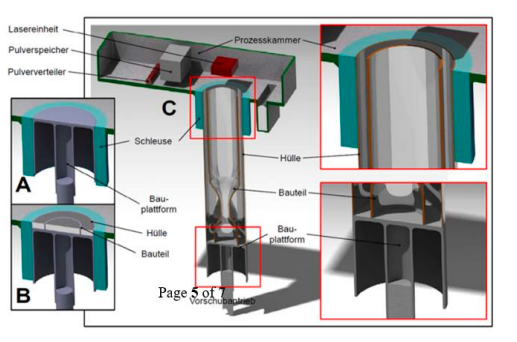
Developed at KIT (Karlsruhe Institute of Technology), this technology offer gives the possibility to have an expansion of dimensional limits in Additive Manufacturing using powder bed processes. Inspired from other manufacturing technologies (e.g. extrusion), modifications for existing machine layouts have been designed and a concept has been developed allowing the operation of an SLM machine in quasi-continuous operation without length limits driven by the process chamber dimensions. Investigated for fusion components manufacturing, this technology and know-how could now find promising applications in the sectors of aerospace, energy and transports for 3D printing of long complex lightweight structures.
Additive manufacturing of tungsten by means of laser powder bed fusion
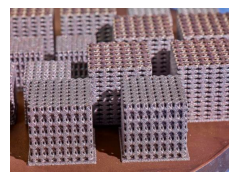
The present offer describes an additive manufacturing (AM) technology for tungsten which is a refractory metal with outstanding properties as tungsten exhibits e.g. the highest melting point as well as the lowest vapour pressure of all metals. With such a manufacturing approach, geometrically complex tungsten parts can be realised straightforwardly which means that fabrication flexibilities beyond the possibilities of conventional manufacturing methods are provided. The AM of tungsten can be of interest regarding various applications for which complexly shaped tungsten parts are required or desirable. The development work regarding the AM method described within the present offer was during recent years being performed by R&D institutions for plasma facing materials in fusion.
Process for pilot hole fabrication in wire cutting (Electrical Discharge Machining, EDM) to improve length/diameter-ratio and precision
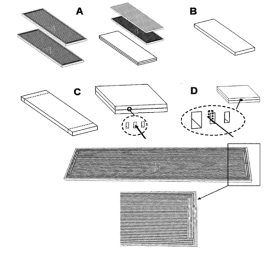
Developed at KIT (Karlsruhe Institute of Technology) for Test-Blanket-Module components, this technology offers increases limits in length/diameter ratio and precision (drift) of pilot holes used for Electrical Discharge Machining (wire cutting). Instead of fabricating a start hole e.g. by deep-hole drilling, grooves are machined into the surface of bodies by standard machining. The bodies are then joined together using diffusion welding. Thus, limits in terms of length/diameter ration as well as drift along the drill axis can be eliminated. This fusion based technology and know-how could now find promising applications in the field of hard metal processing companies and EDM equipment manufacturers.
Tungsten fibre-reinforced copper composites for high temperature and high heat flux applications
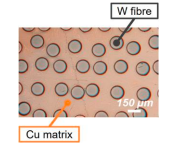
The present offer describes a tungsten fibre-reinforced copper (Wf-Cu) composite material concept that exploits the properties of commercially available drawn high-strength tungsten fibres embedded in a high conductivity copper matrix. With this approach, materials that can be realised exhibit outstanding property combinations regarding conductivity and strength. Such a composite material can hence be of interest in general regarding demanding high temperature and high heat flux applications. The development of Wf-Cu was being performed by fusion R&D institutions as potentially advanced heat sink materials for highly loaded, actively cooled plasma facing components.
Modular High-Field Superconducting Magnets with Demountable Joints

The development of modular high temperature superconducting magnets offers significant benefits to fusion by reducing the risk of failure while facilitating the maintenance and enabling the construction of very large complex components. University of Durham and CCFE have worked on the soldered joints which are essential components of this concept. This technology could open new possibilities in existing and promising applications of superconductivity such as : Magnets for Magnetic Resonance Imaging (MRI), Low and high field magnets for Nuclear Magnetic Resonance (NMR), low and high field magnets for physical sciences and research, Accelerators for high-energy physics, Industrial magnets for materials magnetic separation, Superconducting Sensors, Power Cables…
Radiofrequency low-temperature plasma source for biomedical use
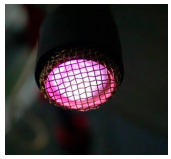
The radiofrequency plasma source is a tool developed at Consorzio RFX (Italy) whose main research field is magnetically confined fusion plasmas. The plasma source is a handheld device producing a helium low-temperature atmospheric pressure plasma that creates active chemical species enabling biological and therapeutic effect with no direct contact. RFX holds a European patent on the device and seeks companies willing to get a license to develop a commercial product.
Tungsten-based semi-finished products with high toughness, ductility, strength, and thermal conductivity
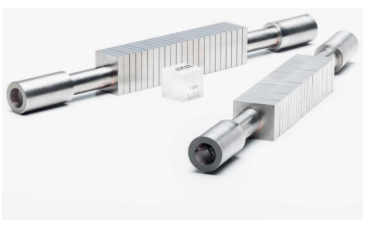
Scientists at KIT have developed a strong know-how in the production of tungsten laminate semi-finished products for plates, pipes or foils. They are used for W-Cu Laminated cooling Pipes, Helium Cooled High Heat Flux Mock-ups and has found application in fusion under EFDA programme (Tungsten laminate pipes for Innovative High Temperature Energy Conversion Systems or structural divertor applications for example). This expertise offers the possibility to produce ductile/tough tungsten materials with high thermal conductivity and high strength. The innovative approach by laminating tungsten foils to semi-finished products opens a new materials class that enables various applications in cooling, energy conversion technology or structural/functional high-temperature applications in vacuum or inert gas.
Powder Injection Molding for large scale tungsten alloys parts
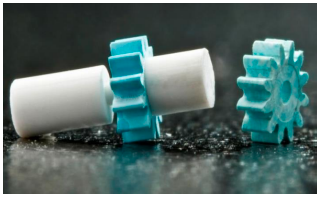
Developed at KIT IAM-WK, this technology and know-how consist in metal or ceramic parts manufacturing via Powder Injection Molding and include the whole process chain (development, design and fabrication of a PIM tool, filling simulation, tailored feedstock preparation, injection molding, debinding and sintering. Manufacturing materials with high melting points, such as tungsten or doped (with oxides or carbides) tungsten materials with near-net shape precision and in medium to high volumes is a technology of interest for fusion, especially for plasma-facing material (for example Langmuir probes for the WEST project have been produced via PIM). Besides, this technology could find promising applications in solar ovens, power units but also for cost effective mass production of Carbide tools, electrodes, jewellery, turbine blades or in sports accessories: e.g. arrowheads (archery, darts).
Deposition of thick tungsten and high melting point materials coatings
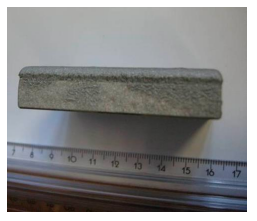
Plasma Spray is the most versatile of all the thermal spray processes and can be used to deposit very different materials, from metals to ceramics. RINA Consulting – CSM has a special equipment installed in Rome and is able to work in different modalities (APS, VPS, IPS, and HPPS) with a chamber volume of about seven cubic meters and the possibility to deposit thick coatings from 50 micron to some millimetres of thickness. The technology has been used in several nuclear activities focused on the study of the plasma-wall interaction in the presence of high thermal loads and received funding’s within EFDA and its main advantage is the possibility to deposit materials with very high melting point so it is the best solution for ceramics and refractory metals.
Oxidation resistant tungsten-based alloys for high temperature application
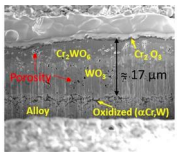
CEIT-IK4 is a non-profit research centre located in San Sebastian, Spain, whose main task is to carry out industrial research projects under contract, in collaboration with R&D departments of companies. CEIT-IK4 works on the development of Self-passivating tungsten-based alloys for the first wall of fusion reactors and provides major safety advantage compared to pure W incase of a LOCA with simultaneous air ingress, due to the formation of a protective scale preventing the formation of volatile and radioactive WO3. Potential non-fusion applications are all those high temperature fields for which pure tungsten would be a good option but its poor oxidation resistance prevents its use or leads to short in service lifetime: electrodes, electrical contacts, balancing weights in gas turbine rotors, components in high temperature furnaces…
Synthesis of nanometric MoNbW alloy using self-propagating hightemperature synthesis
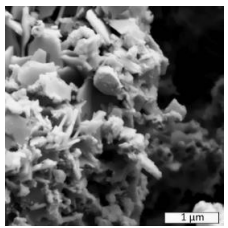
Considering applications for plasma facing materials (PFM) in tokamak, the French laboratory LSPM has developed a new methodology for nanometric refractory tungsten alloys manufacruting with high homogeneity in composition. The originality of the invention consists in providing to the nanopowders interesting properties’ such as a low brittle-to-ductile transition temperature in order to be machinable, and a good resistance to oxidation. The synthesis of nanometric tungsten alloy powder into submicron platelets offers an increase of ductility of up to 30% and make them suitable for fusion application. This methodology could be applied to other binary, ternary and quaternary alloys as well as High Entropy Alloys (HEA) and find therefore potential applications in non-fusion domains.
Metal Pipe as a Structural Component
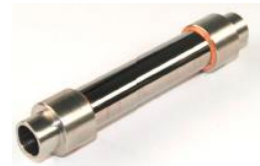
The technology is related to the use of metal pipes constructed from several layers of metal foil as structural components, and the process for their manufacture. The original use of these is in nuclear fusion reactors, for which they have been successfully tested and where such pipes would be exposed to extremely high temperature and pressure regimes, far exceeding the allowable regime of application of conventional (steel) pipes. The technology is ready for use in the non-‐fusion domain and was patented by the inventors Jens Reiser, Bermhard Dafferner, Anfreas Hoffmann, Michael Rieth, Werner Schulmeyer and Anton Möslang
Improved Carbon Fibre Composite
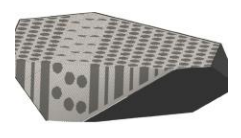
The technology presented is a novel carbon fibre composite structure with a substantially reduced erosion rate when used on surfaces subjected to heating by high velocity particle flows. The innovation relates to the arrangement of the sewing and web fibres while maintaining the actual structure of the pitch/carbon fibres that make up the main heat conducting capability. Such an improved structure reinforces the thermal shielding capability of the components and reduces the erosion rate by 4 to 5 times compared to conventional carbon fibre composite material. The technology can be used in the non‐fusion domain and was patented by the inventor, Dr. Sergey Peschany.
Technology for producing and utilising a protective layer on martensitic steel
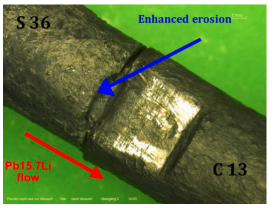
Martensitic steel is often used when high toughness Steel with high formability is required. When such steel is used in fusion experiments, a layer to protect against losses (diffusion) of Tritium is required. The invention is a production process in which these material attributes are achieved. In a sequence of steps, the basic steel material is coated, pressurized and further hardened to achieve these characteristics. The technology is ready for use in the non-‐fusion domain and was patented by the inventors, Heike Glasbrenner, Kathleen Stein-‐Fechner and Olaf Wedemeyer
Nanofluids For Improved Heat Transfer
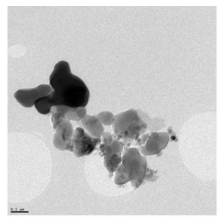
Research is underway into the use of nanofluids to improve the cooling of surfaces within fusion reactors that are exposed to extreme heat fluxes. Nanofluids are a mixture of liquids (typically water) with nanoparticles (<100nm) in a concentration that is usually less than 1% by volume. Nanoparticles being investigated are alumina, ceramics, and carbon nanotubes, as these are known to increase both the conductive and convective heat transfer coefficients by up to half an order of magnitude (5x), and the critical heat flux of current coolants by up to an order of magnitude (10x) for boiling heat transfer. Due to this, cooling systems that are based on nanofluids could deliver a step‐change in the power handling performance of heat exchangers and other components.
Hydrogen Permeation Barriers
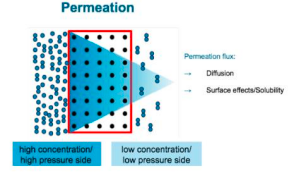
The Research Centre Juelich has gained substantial expertise in the development, preparation and characterization of hydrogen permeation barriers. In the fusion domain, such coatings are needed to limit losses of Tritium to the environment. Promising laboratory experiments have been conducted. A partner is sought that is interested in developing coating equipment and processes for industrial application based on the know‐how available at Research Centre Juelich.
First-wall component for a nuclear fusion reactor
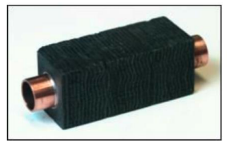
A leading European research institution, FZ Jülich, has developed a first-‐wall (i.e. plasma‐facing) composite component for use in a nuclear fusion reactor. The component comprises a fibre‐reinforced graphite heat shield with a lead‐through that contains a CuCrZr alloy cooling tube. The component is ideal for high heat flux applications such as energy generation or aerospace, as well as high neutron or plasma backgrounds. The component has been developed and successfully tested for use in the JET nuclear fusion reactor and so is highly resistant to thermal and neutron stress, and also thermal shock.
Functionally Graded Materials (FGMs)
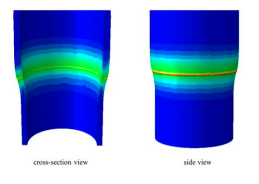
A functionally graded transition between two materials with different material properties like thermal expansion increases the reliability of the connection between the two materials and provides the ability to control deformation, dynamic response, wear, corrosion, etc. FGMs can be used to connect many different materials such as metal/ceramic,alumina/zirconia,alumina/steel,tungsten‐carbide/steel, tungsten/copper, polymer/concrete, bones/metal, and aluminium/polyethylene.
You did not find a technology that met your demand? Share your need !


